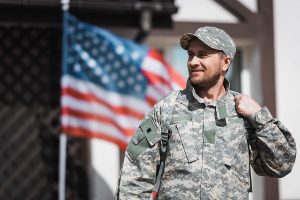
With nearly three million people in the federal workforce, the government has to be prepared to support employees with a wide variety of needs. With a workforce that resembles the population as a whole, the policies that the government puts in place can be used as an example for private sector companies as well as for organizations supporting our nation's more vulnerable populations.
The following three programs illustrate the ways the government is supporting its workforce and citizens when they are in vulnerable situations. Continue reading




 The Department of Veterans Affairs (VA) is keenly focused on improving the healthcare and general services that support our military veterans. Incumbent on these improvements is the integration of leading edge technologies that digitize and automate processes for efficiency along with important security enhancements.
The Department of Veterans Affairs (VA) is keenly focused on improving the healthcare and general services that support our military veterans. Incumbent on these improvements is the integration of leading edge technologies that digitize and automate processes for efficiency along with important security enhancements.
